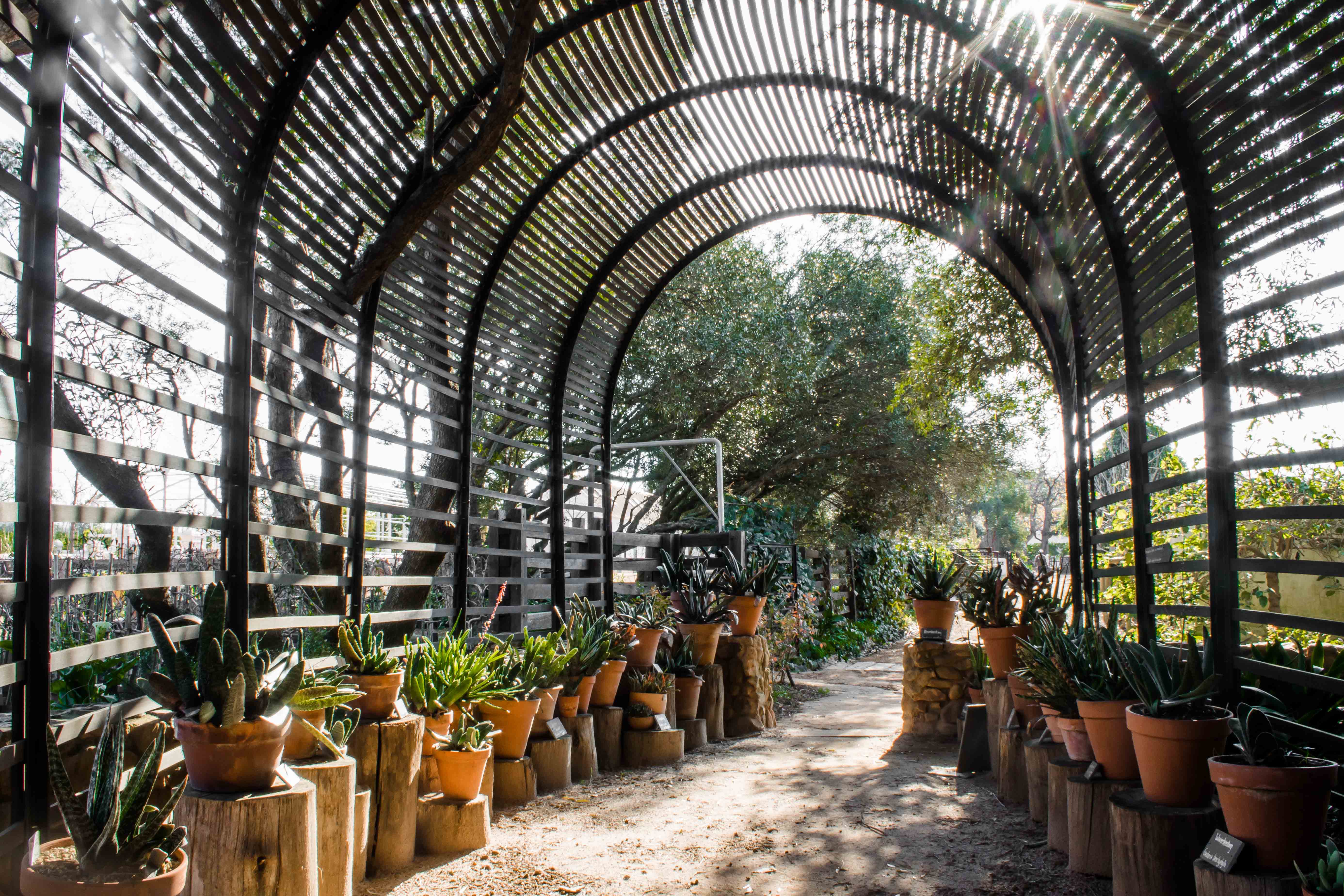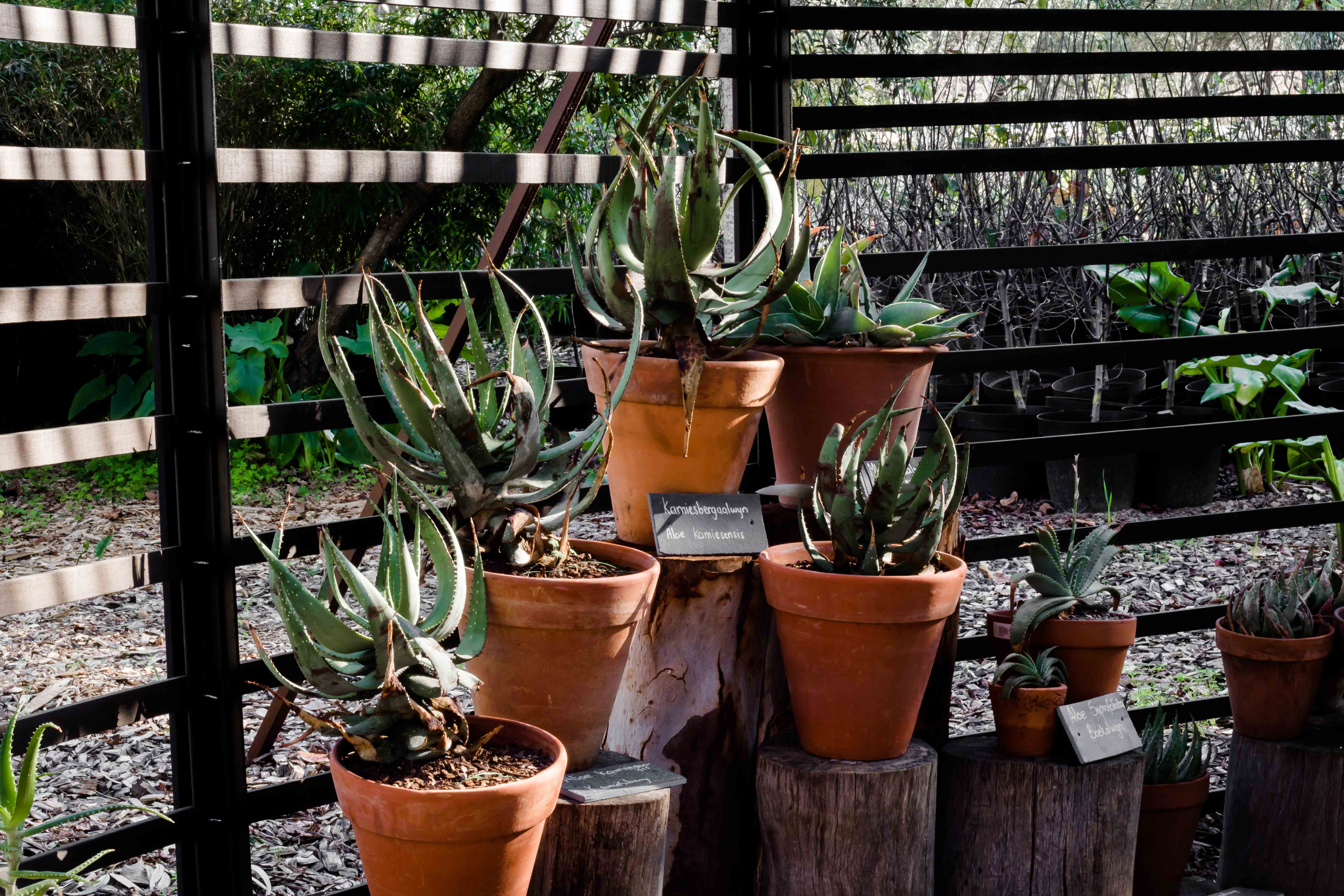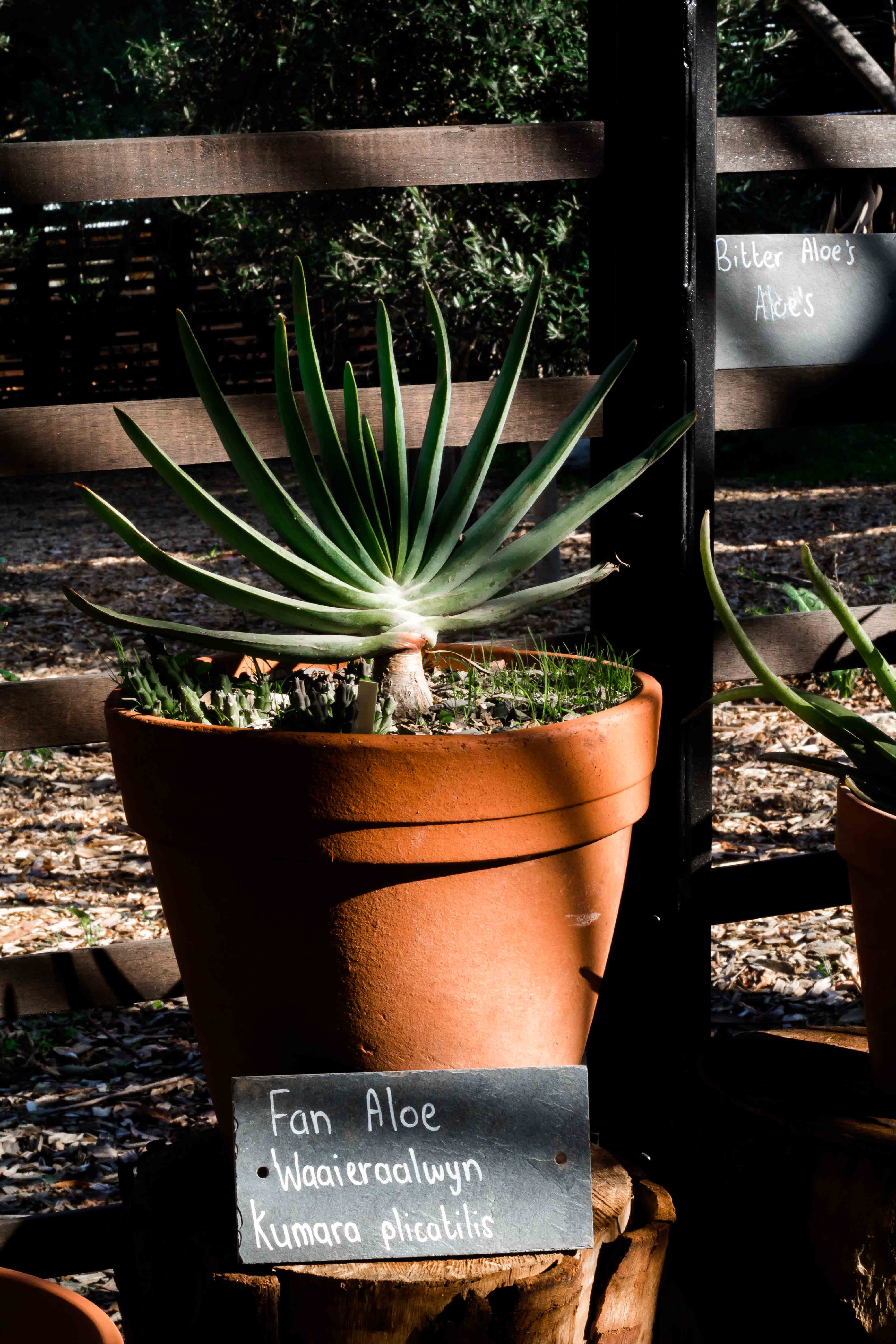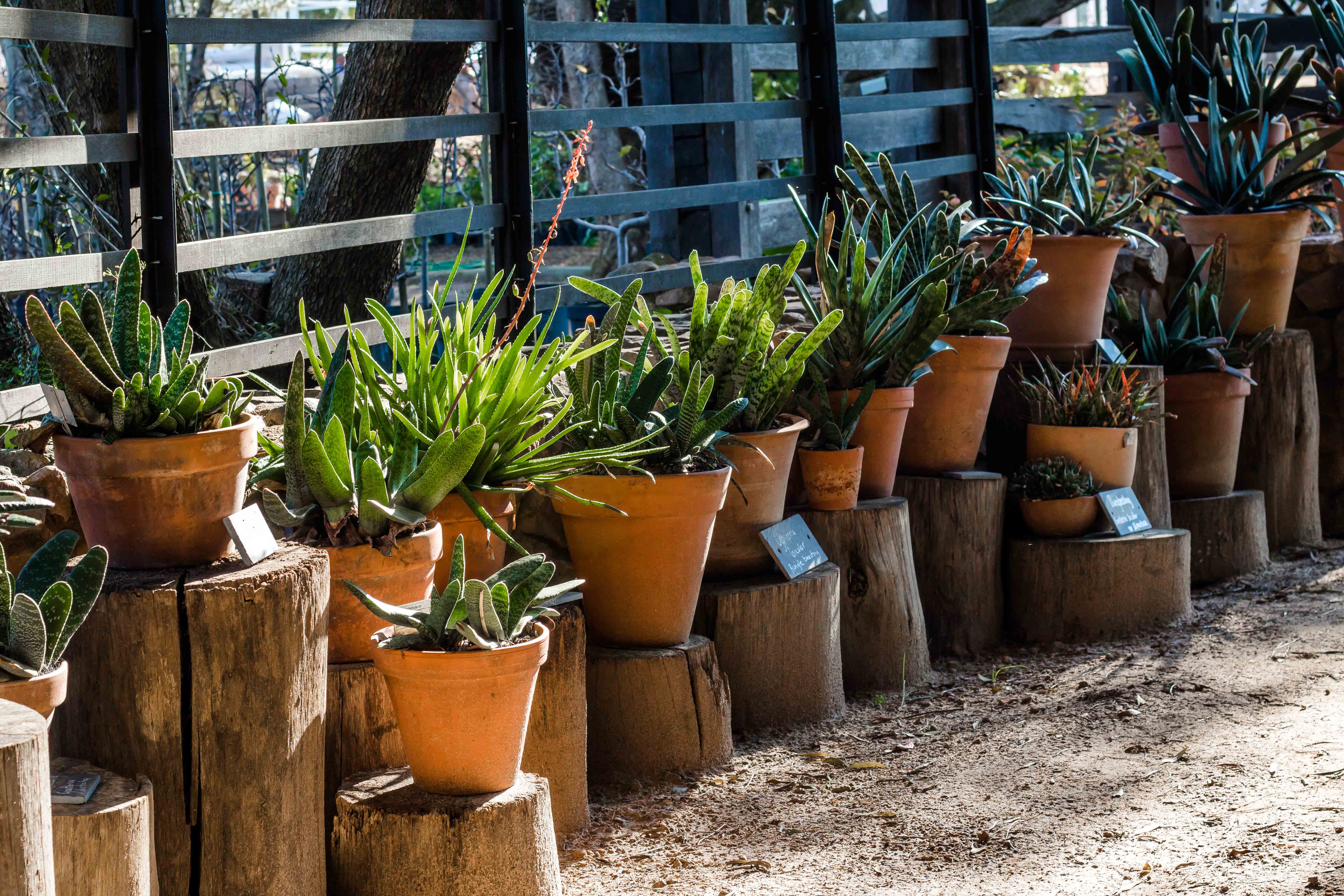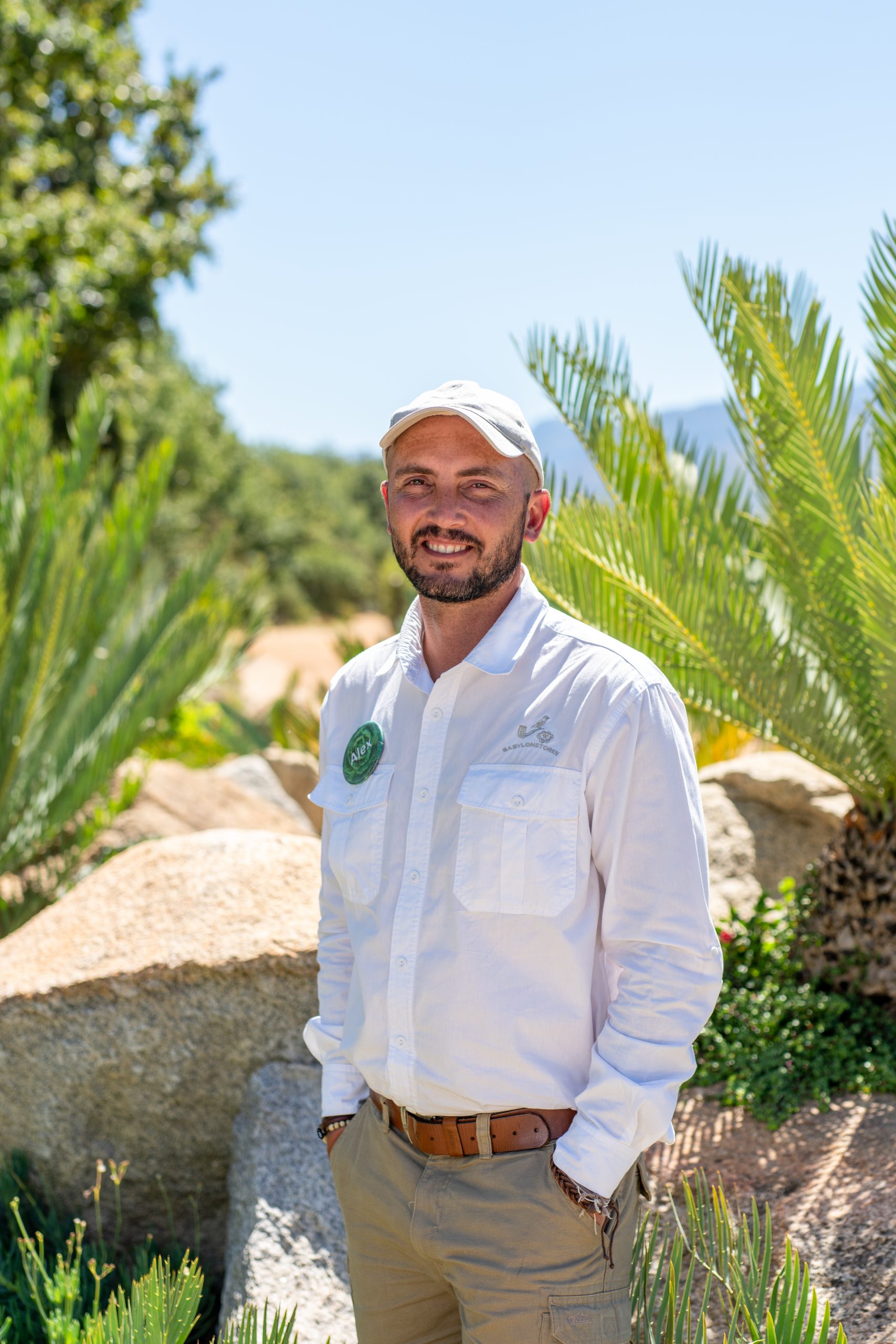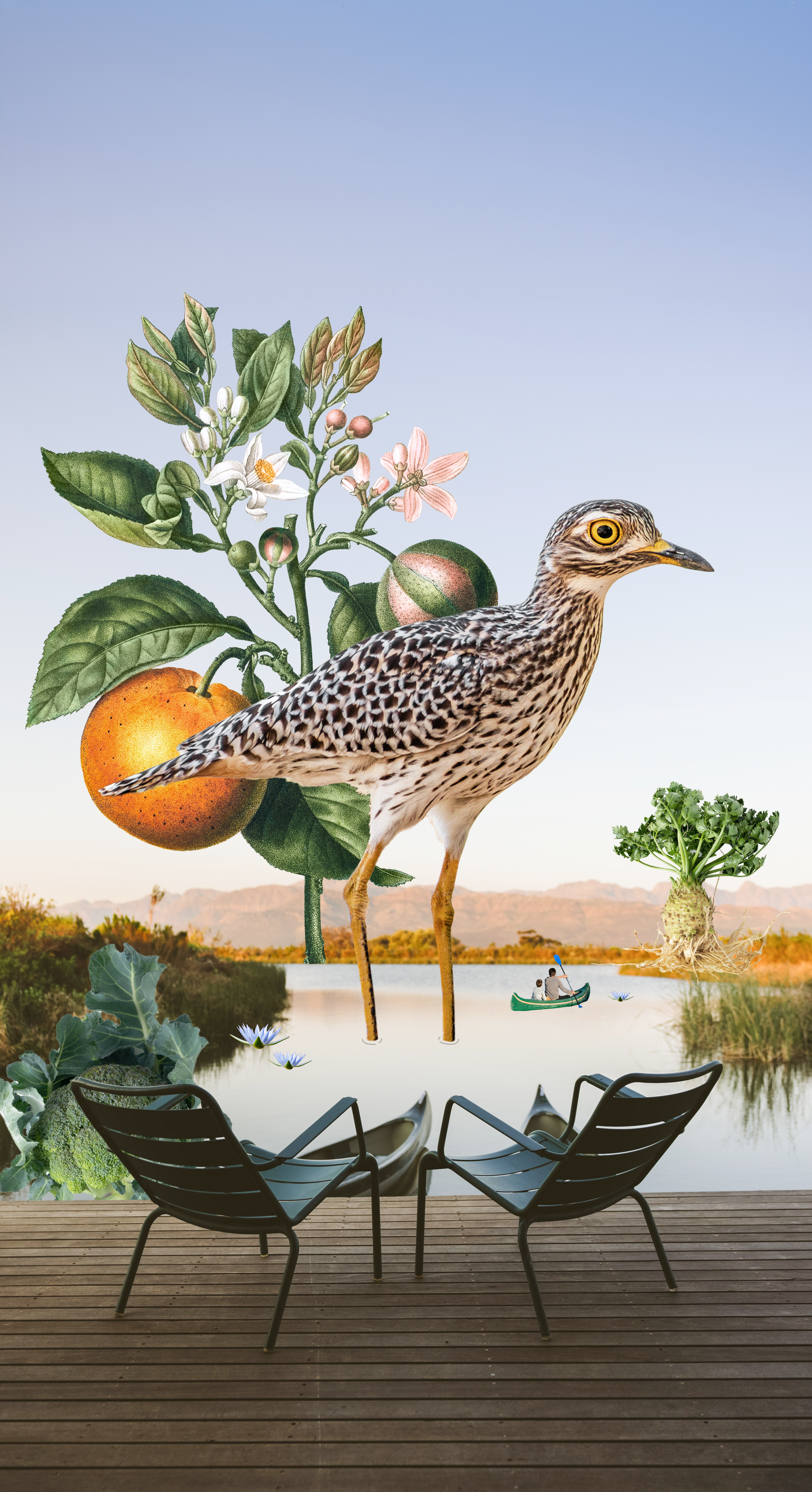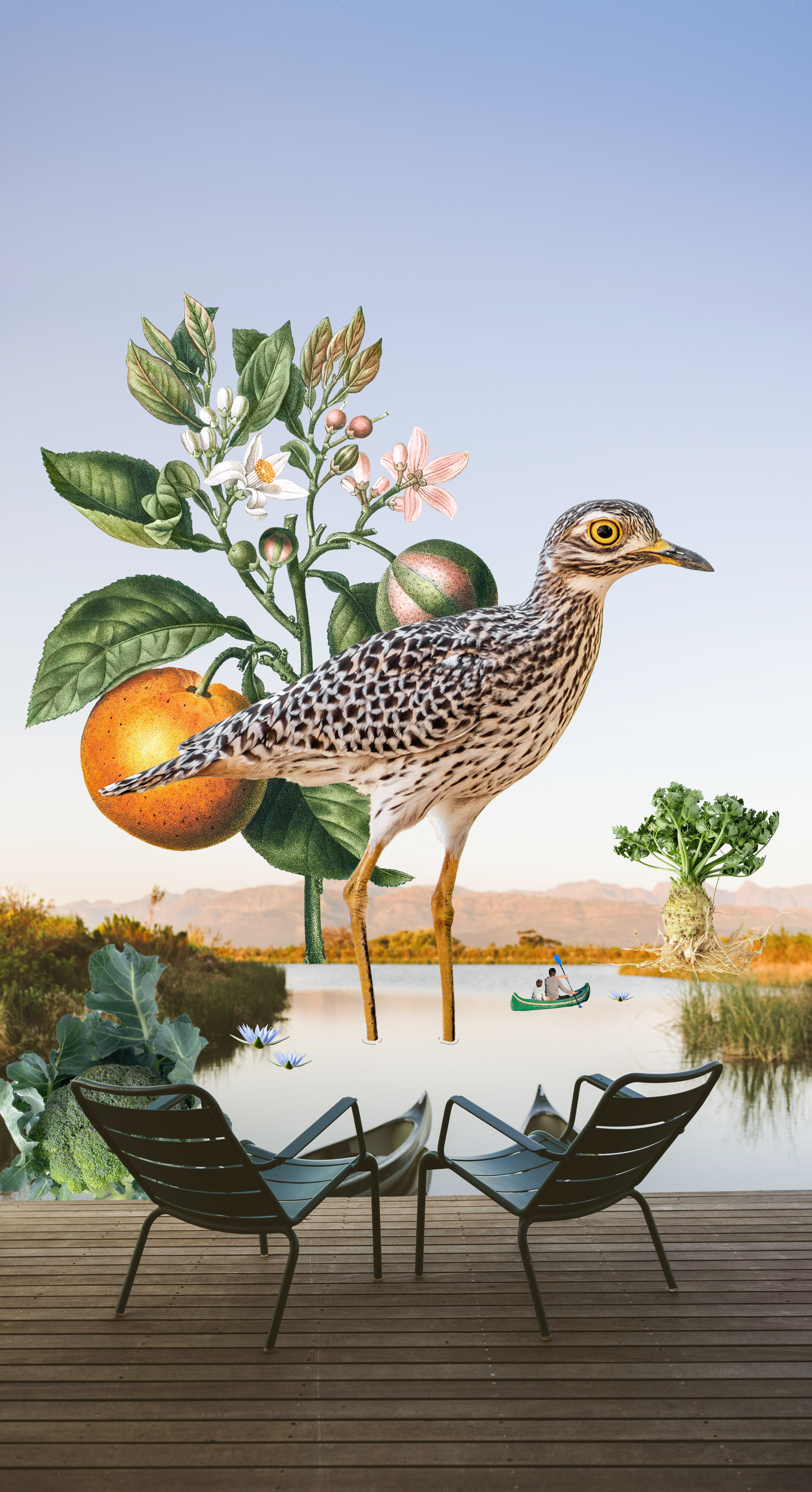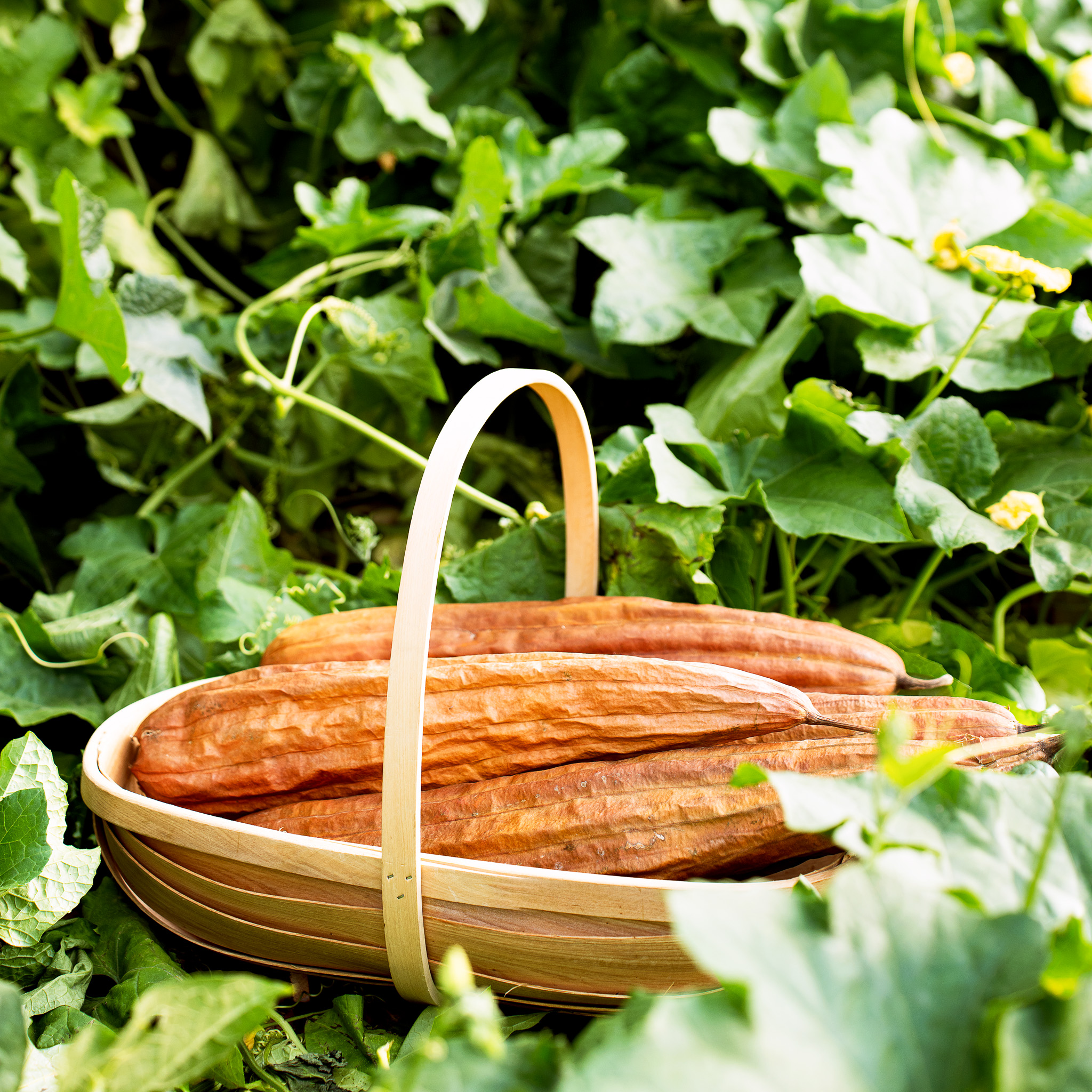Africa’s bittersweet beauties: An aloe display in the Puff Adder
August 8th, 2017New visitors will be delighted to discover that the Puff Adder path currently holds an exhibition of the aloes we lovingly preserve on the Babylonstoren farm. Sourced from far and wide across South Africa, our collection of aloes includes each of the 11 genera currently documented.
Thank you to Jessica Stafford & Hameer Vanmali for capturing these bittersweet beauties.
The exhibition guides you through an educational and spellbinding journey of the collection, revealing the unique features that make the indigenous aloe so hardy in their hostile habitats. It cannot be denied that the aloe represents a proudly local icon, particularly against the semi-arid regions of our country, with their bold shape and fiery tubular flowers.
This exhibition is especially relevant now – an indigenous species with the greatest diversity locally, the aloe has adapted to the unique challenges of the South African terrain. The aloe is a waterwise plant that is best grown on well-drained sites with ample compost and full sun. They make for excellent fire protection and provide a haven for sunbirds. Other than being a way of fending off grazers, the bitter sap is well known for its soothing effect on sun and stove burns.
Did you know? Each genera of aloe has unique features enabling it to survive in its harsh conditions. For example, the smaller dwarf aloe (Haworthia) camouflages itself on unreachable cliffs. In contrast, the ox-tongue aloe (Gasteria) has brittle, non-bitter mottled leaves that simply resprout after being grazed on. Find out more survival mechanism adapted by this fascinating plant species at our exhibition.
The variety of aloes on display include: Tree aloe boomaalwyn, (Aloidendron barberae) | Tonga Tree Aloe, Tonga-boomaalwyn (Aloidendron tongaensis) | Quiver tree, kokerboom (Aloidendron dichotomum) | Fan aloe, waaieraalwy (Kumara plicatilis) | Dwarf aloe dwergaalwyn (Haworthia maculata) | Klimaalywyn, Climbing aloe (Aloiampelos ciliaris) | Kamiesbergaalwyn (Aloe kamiesensis) | Kunene-aalwyn (Aloe huntleyana) | Olifants-spikkelaalwyn (Aloe monotropa) | Kouga-aalwyn (Aloe pictifolia) | Magaliesberg-aalwyn (Aloe peglerae) | Driesustersaalwyn three sisters aloe (Aloe rouxii) | Baker aloe (A. bakerii) | Somaliee aalwyn (Aloe somaliensis) | Dwerg-aalwyn (Aloe krapohliana) | vera-aalwyn (Aloe vera) | Mbashee aalwyn, Mbashe aloe (Aloe reynoldsii) | Steekaalwyntjie (Astroloba rubriflora) | Drakensberg-dwergaalwyntjie (Aristaloe aristata) | Kanniedood (Gonialoe variegata) | Knoppies-dwergaalwyn (Tulista pumila) | Zebra-dwergaalwyn (Haworthiopsis attenuata) | Lebombo dwergaalwyntjie (H. limifolia) | Suurberg-dwergaalwntjie (H. glauca) | Mbashe dwegaalwyntjei (H. glabrata) | Zebra-dwergaalwytie (H. reinwardtii) | wurm-dwergaalwyntjie (H. coarctata) | Perdetande (H. truncata) | stokkiesaalwyn (H. longiana) | Kransbeestong (Gasteria excelsa) | Gamtoosbeestong (G. pulchra) | Bontbeestog (G. bicolor var. bicolor) | Dwergbeestong (G. bicolor var lliliputana) | waaierbeestong (G. brachyphylla) | Oukossie (G. disticha) | kransklouertjie (G. glomerata) | vaalbeestong (G. glauca) | skerptongetjie (G. ellaphieae) | knoppiesblaarbeestong (G. carinata var. verrucosa) | skurweblaarbeestong (G. batesiana)
Not getting enough of these bittersweet beauties? From the smallest to the largest on the planet – we dish out all the tips for growing succulents at our workshop.
JOIN THE WORKSHOP
